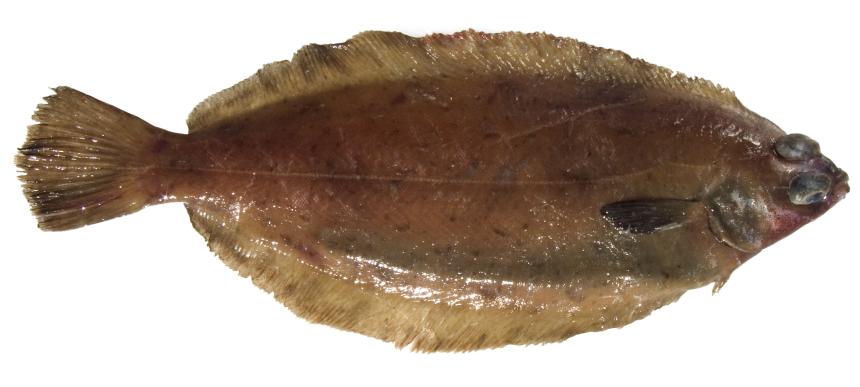Commonly caught off the Washington coast by commercial harvesters using otter-trawls and occasionally by longline gear. They are rarely caught by recreational harvesters within Puget Sound.
Description and Range
Physical description
A right-eyed elongate sole with very small scales. The eyed side is brown or grayish brown and it may be mottled with darker spots. The blind side is smudgy off-white to dark brownish gray. The dorsal and anal fins are blackish toward the edges. It’s body is soft, flabby, and very slippery because of the large amount of slime coating it. This species has a lateral line that is nearly straight with a short, unconnected branch near the top of the head; there is no accessory dorsal branch. The Dover sole has a rounded caudal fin. The mouth is very small with flat, incisor-like teeth mostly on the blind side. They have large, bulging eyes with a convex space between them; the upper eye is posterior to the lower. This species lacks an anal spine.
Dover sole can grow up to 76 cm (30 in) in length and 4.5 kg (10 lbs) in weight. Maximum age is 58 years.
Geographic range
Dover sole range from the Bering Sea and eastern Aleutian Islands in the north to San Cristobal Bay, Baja California in the south. They are typically found on mud or sand bottoms from 9 to 1,372 m (29-4,501 ft).
